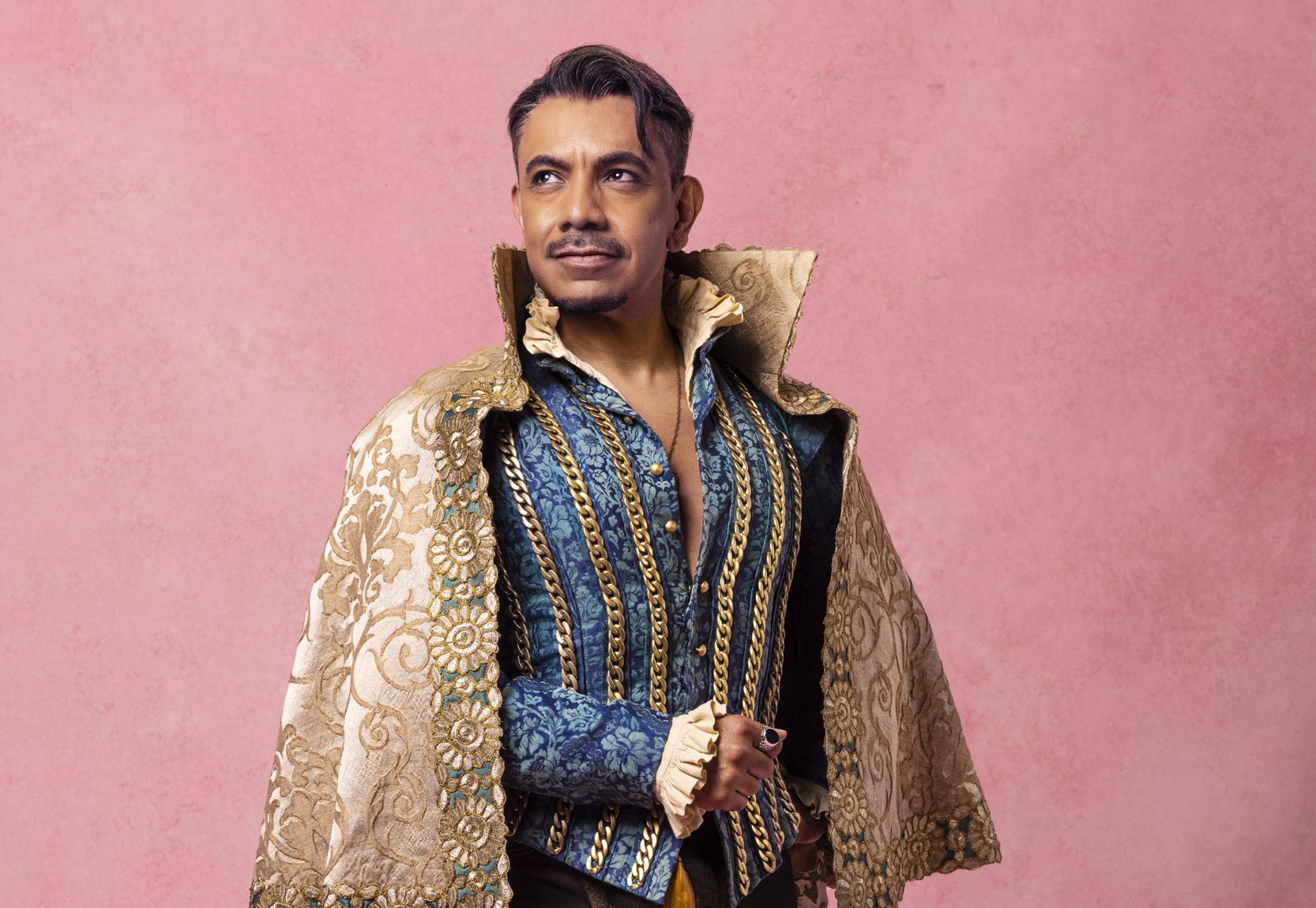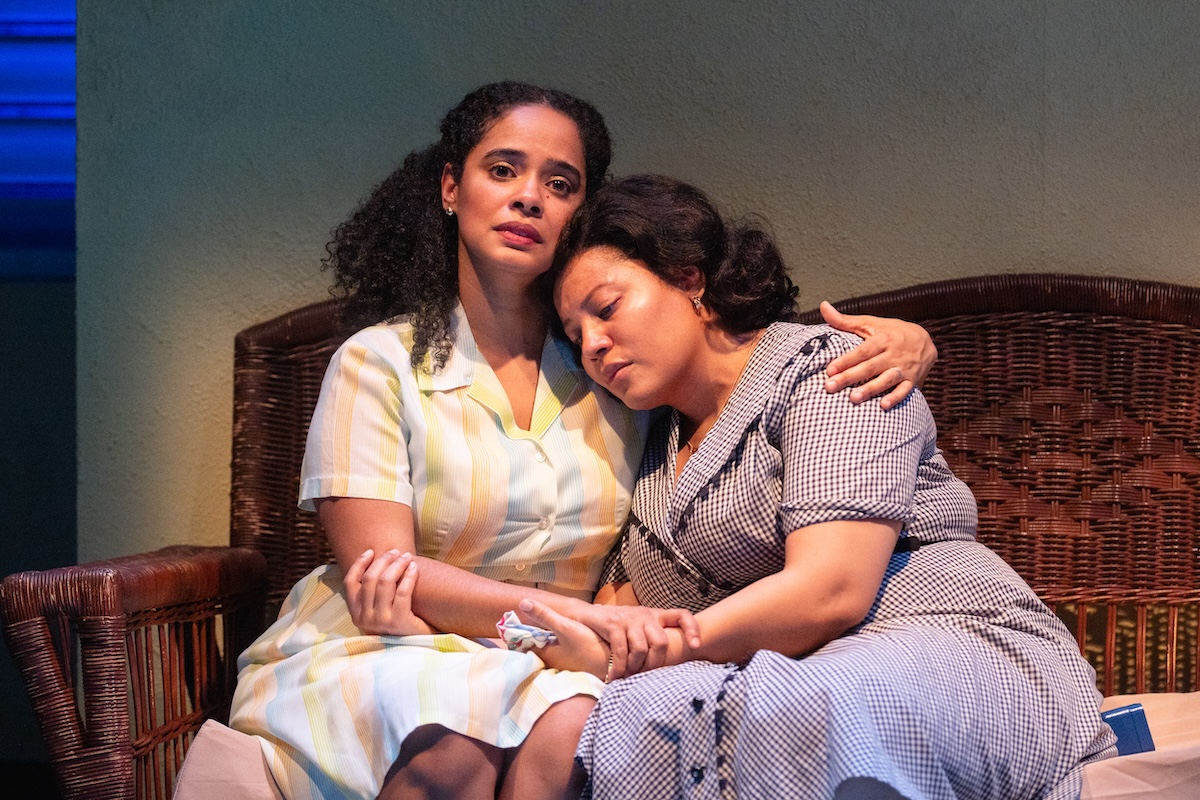A Closer Look at…Chicago

Pamela Payton-Wright in
Long Day’s Journey Into Night
at the Goodman Theatre
(Photo: Eric Y. Exit)
In a setup similar to that found in New York, Chicago’s thriving theater community is tiered: Whereas in NYC you’ve got Broadway, Off-, and Off-Off, in Chicago you’ve got the Loop scene, the Off-Loop scene, and everything else. But this is not a perfect analogy; with one very notable exception, the Loop (so-called because the El trains circle downtown in a big loop) is not where the glory and beauty of Chicago theater can be found. Let’s start our tour with that exception:
********************
THE HEAVY HITTERS
Although the Goodman Theatre technically dates back to January of 1925, when it began life as the Department of Drama of the Art Institute of Chicago, it didn’t become a professional theater until 1969 and didn’t move into its extraordinary home in downtown Chicago until late in 2000. By that time, the Goodman had long since emerged as one of the most prestigious and well-endowed regional theaters in the country, with a prodigiously talented artistic collective (Mary Zimmerman of Metamorphoses fame is among the artistic associates–more on this Chicago superstar below) and a regular stream of plays moving eastward to Broadway. Maybe, for example, you caught the 1998 revival of Death of a Salesman, directed by Robert Falls (Goodman’s dynamic artistic director since 1986) with Brian Dennehy in the title role; the Tony committee sure caught it, naming Dennehy best actor and Falls best director. These two were just recently back in action at the Goodman with a well received production of Long Day’s Journey Into Night, around which there have been a flurry of Broadway rumors.
But the Goodman, when it won a Tony for outstanding regional theater in 1985, was actually the second Chicago institution to do so. The first is centered at North and Halsted, well off the Loop, called Steppenwolf Theatre Company. An organization that even people who know little about Chicago theater know by name, Steppenwolf was founded in a church basement in 1974 by a bunch of struggling Illinois State University theater school grads: John Malkovich, Terry Kinney, Gary Sinise, et al. These days, the Steppenwolf Ensemble includes 33 actors, directors, and playwrights, and the strength of its productions (witnessed by some 25,000 subscribers) flows from the strength of the ensemble: The theater carefully selects its material to highlight the acting and directorial chops of its company members.
So, for example, during the 1999-2000 season Steppenwolf put up a revival of One Flew Over the Cuckoo’s Nest featuring Sinise and Amy Morton, an ensemble member since 1997; the following season, Morton was directing an Irish ghost story called The Weir. Steppenwolf is known for a lot of things, including its long relationship with Chicago’s premiere playwright, David Mamet, and a generally avant-garde and somewhat brooding aesthetic. Even its recent stab at a musical, 2000’s The Ballad of Little Jo, was about a cross-dressing pioneer who gets beat up a lot.
********************
THE CONTENDERS
Lingering below the Goodman and Steppenwolf in terms of clout and subscription numbers is a second tier of solid and respected theaters, each occupying an important niche in the Chicago scene.

of Victory Gardens celebrate their regional theater Tony Award
New plays are the bread and butter of Victory Gardens, which picked up its own regional theater Tony award in 2001. VG is built around an ensemble of 12 playwrights–including names like Claudia Allen (Fossils), James Sherman (Beau Jest), and Jeff Sweet (Flyovers)–and the theater does nothing but world premieres, a strategy that is perpetually risky but has evidently earned the loyalty of its subscribers. The Victory Gardens building is always a great place to be; the upstairs performance space is rented to up-and-coming troupes like the Irish Rep and Seanachai.
The original mission of the University of Chicago-affiliated Court Theatre was to present classics under the stars but, when Nicholas Rudall signed up as artistic director in 1970, the company started moving: indoors, for one thing, and towards a wider repertoire. Though it still does its share of classics, the theater throws plenty of new works into the mix; most often, they are of a scholarly and/or literary bent. The last couple of seasons have seen not only artistic director Charlie Newell’s Hamlet but also the Phillip Glass/JoAnne Akalaitis collaboration In The Penal Colony and the pre-Broadway production of Tom Stoppard’s The Invention of Love. Most years, the theater ends its season with two plays in rotating repertory, but this year the Court people are wrapping things up with an intimate, two-pianos production of My Fair Lady.
Like the Goodman, Chicago Shakespeare Theater recently moved to a new home…but the Goodman isn’t nearly as close to a Ferris Wheel. Navy Pier, the family fun center (read: tourist trap) that juts out into Lake Michigan from the end of Chicago Avenue, got a serious dose of culture when Chicago Shakespeare (with plenty of help from the city) put the finishing touches on its 510-seat theater there in October 1999. Thus ended a decade of wandering for a company that began as the tiny Shakespeare Repertory, upstairs from the Red Lion pub, in 1986. Still under the direction of founder Barbara Gaines, CST has built a huge audience for the Bard in a town better known for its support of new plays and playwrights; at present, Gaines is directing The Tempest, the theater’s third full Shakespeare production of the year; meanwhile, in the “Upstairs at Chicago Shakespeare” space, associate artistic director Gary Griffin has taken on Sondheim’s Pacific Overtures.
One more big theater company move of recent years was into the Water Works, a historic downtown building on the Miracle Mile. The new tenant, Lookingglass Theatre Company, counts among its members Mary Zimmerman (almost certain to be a Tony nominee for her production of Metamorphoses, which just completed its journey from Lookinglass to Broadway). Another original company member is David Schwimmer of Friends fame, but Lookingglass partisans would rather talk about the company’s signature style–muscular, fantastical, and acrobatic–than its celebrity cachet.
********************

(Photo: Michael Brosilow)
THE INDEPENDENTS
There is no way to adequately convey the breadth of “alternative” theatrical experiences available in Chicago: all the lesser-known, midsize-to-tiny companies scratching along on grants, making beautiful things happen in rented rooms. Any cursory sampling would have to include the audacious Redmoon, visionary puppeteers who’ve taken on The Hunchback of Notre Dame, Moby Dick, and, currently, Salao: The Worst Kind of Unlucky, an adaptation of Hemingway’s The Old Man and the Sea that Hedy Weiss at the Sun-Times labeled a “masterpiece.” Then there’s Chicago’s pair of gay and lesbian theaters, though they’d hate to be lumped together: the Bailiwick, with a great two-room space on Belmont and a year-round schedule that includes an annual lesbian theater festival (and, currently, the Chi-town version of Naked Boys Singing!); and About Face, which tends to prefer weightier material like Neil LaBute’s bash or Whitman, a poetic musical conjured up by artistic director Eric Rosen.
Nor is there any shortage of good, old fashioned, committed theater companies offering a mix of classics and new work: the political Stage Left, Chicago Dramatists, video artists CollaborAction, Famous Door, American Theater Company, The Aardvark, Shattered Globe, Tinfish Productions, Red Hen, The Journeymen…pick one, and you’ll find a mission statement, a group of committed artists, and just maybe a building. But there will definitely be a story, often concerning a group of friends who graduated from college with big ideas and moved to Chicago to start a theater company. Most of them never turn out to be Steppenwolf, or even Lookingglass–but a great many of them thrive.
********************
THE JOKERS

Among the many other aspects of the Chicago theater scene that won’t be covered in depth here–for example, the great suburban outposts like Next Theater, the Drury Lane, and Marriott Lincolnshire Theaters–is the local comedy scene. This only begins with Second City, the most famous satirical theater in the world. Second City’s working model, which has changed little in 40-plus years of existence, is to give audiences at each performance two hours of sketch comedy followed by an hour-long improvised set; from the improvisations are born new ideas for sketches, which are eventually stitched together into a new show. The group has spewed forth not only a steady stream of famous theater names like Ed Asner, John Belushi, Linda Lavin, and Mike Myers, but also some of the best show titles in the history of the universe–e.g., Slaughterhouse 5, Cattle 0 and Pinata Full of Bees.
As Second City has grown more famous and (inevitably) more pricey and tourist-oriented, the Chicago comedy scene in general has grown by leaps and bounds, and there are no shortage of cheaper, rowdier options. The ImprovOlympic, up by Wrigley Field, was founded by former Second City director Del Close and his partner, Charna Halpern. Their insane idea was to form a theater that just did improvisations. That was 20 years ago, and IO is still going strong; indeed, the troupe just opened a branch in Los Angeles. Other funny folks in Chicago include the Galileo Players and Schadenfreude, both doing sketch reviews; ComedySportz, the exceptionally audience-friendly short-form improv playhouse; and WNEP, whose little theater on Halsted is like a church of weird, no-boundaries comedy where nothing is sacred.
********************
Just like New York, there are more shows in Chicago than anyone could possibly attend, and it often seems like every waiter and record store clerk is really an actor. Far from the lure of Broadway or the pressures of Hollywood, Chicago theater radiates a welcoming, anything-goes aura and an unparalleled excitement about the art form.










